What Are Gyoza Wrappers/Skins?
Gyoza wrappers are thin circles of dough made with wheat flour used to wrap the famous Japanese dumpling called “gyoza.” In Japan, packaged gyoza wrappers are often used, but the homemade ones are tender, mildly chewy, and can hold more filling, so you can take your gyoza to the next level!
Many people think it is difficult to make gyoza wrappers, and I’ll admit it’s a little time-consuming, but anyone can easily make them with a few simple ingredients and tricks.
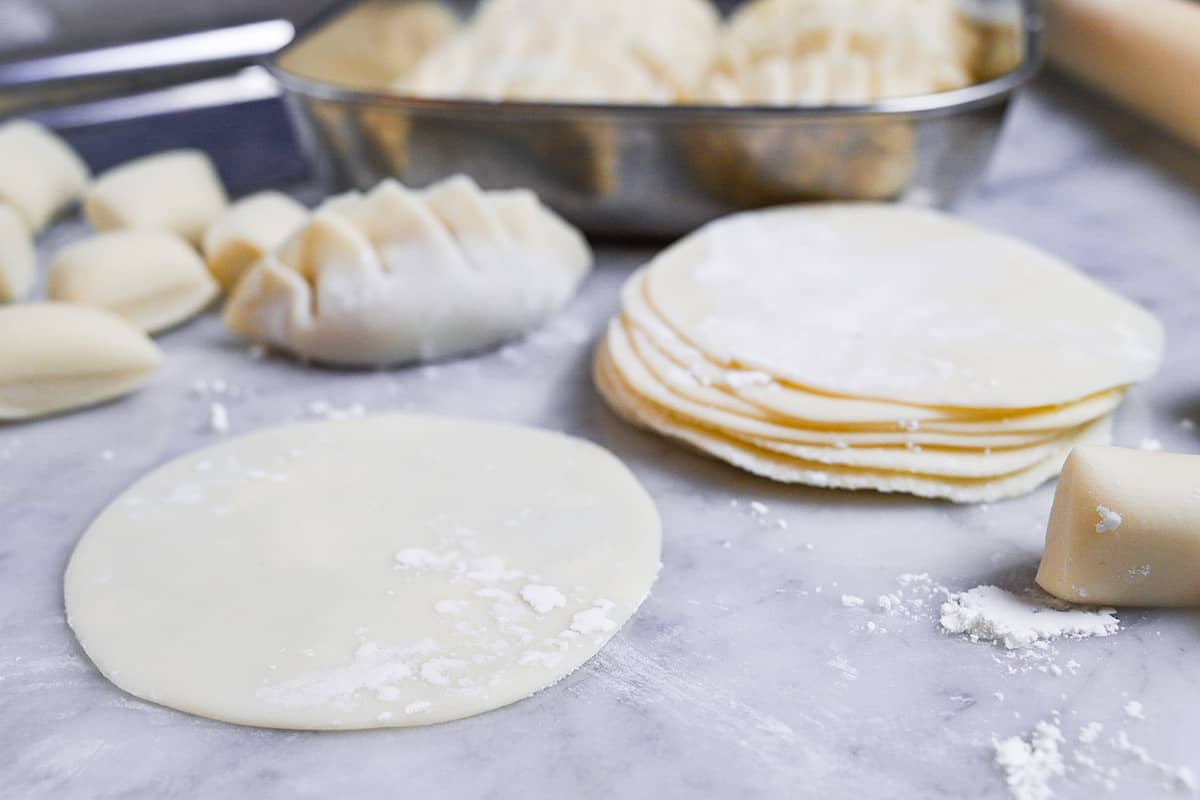

How I Developed This Recipe
In Japan, most people buy store-bought gyoza wrappers because they’re convenient. It’s quick and easy, but I was curious about making gyoza crusts from scratch.
One of the best things about making your own gyoza wrappers is that you can customize them however you like. You can adjust the size and even add flavors to suit your taste, which is a fun twist on the traditional process. It’s a great way to make your gyoza your own and add a personal touch to the dish.
If you have a bit of time on your hands, I’d really recommend giving this homemade gyoza skin recipe a go!
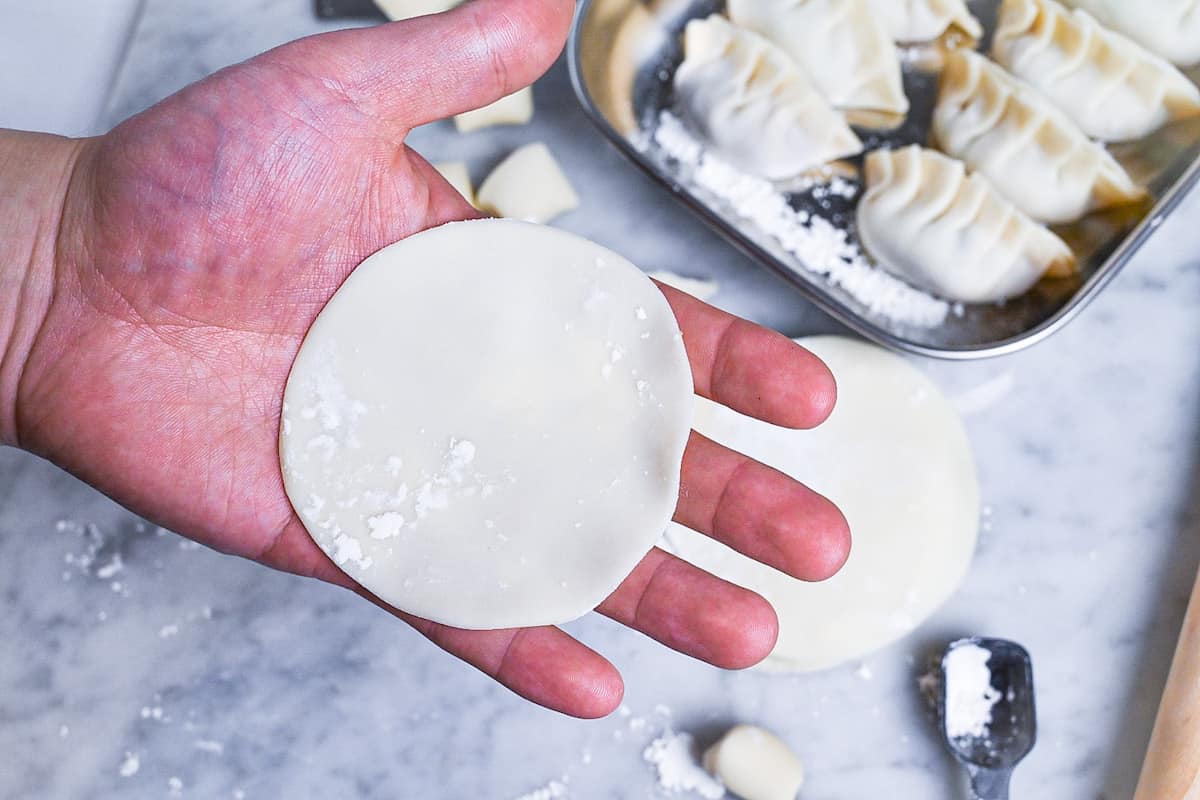
Store-bought vs. homemade Gyoza Wrappers
Although homemade gyoza wrappers taste very nice, most people in Japan opt for pre-made wrappers instead. Why? Okay, let’s discuss the pros and cons of pre-made and homemade ones.
| Store-bought | Homemade | |
|---|---|---|
| Pros | • Ready to use • Easy to work with (shaping) • Quick • Fail free (mostly) • Easy to store | Store-bought |
| Cons | • Tend to be dry • Slightly expensive compared to homemade • Either too many or too little in the packet (happens almost every time) | • Takes time • Can be difficult to make them uniform • Sticks together easily • More difficult to store |
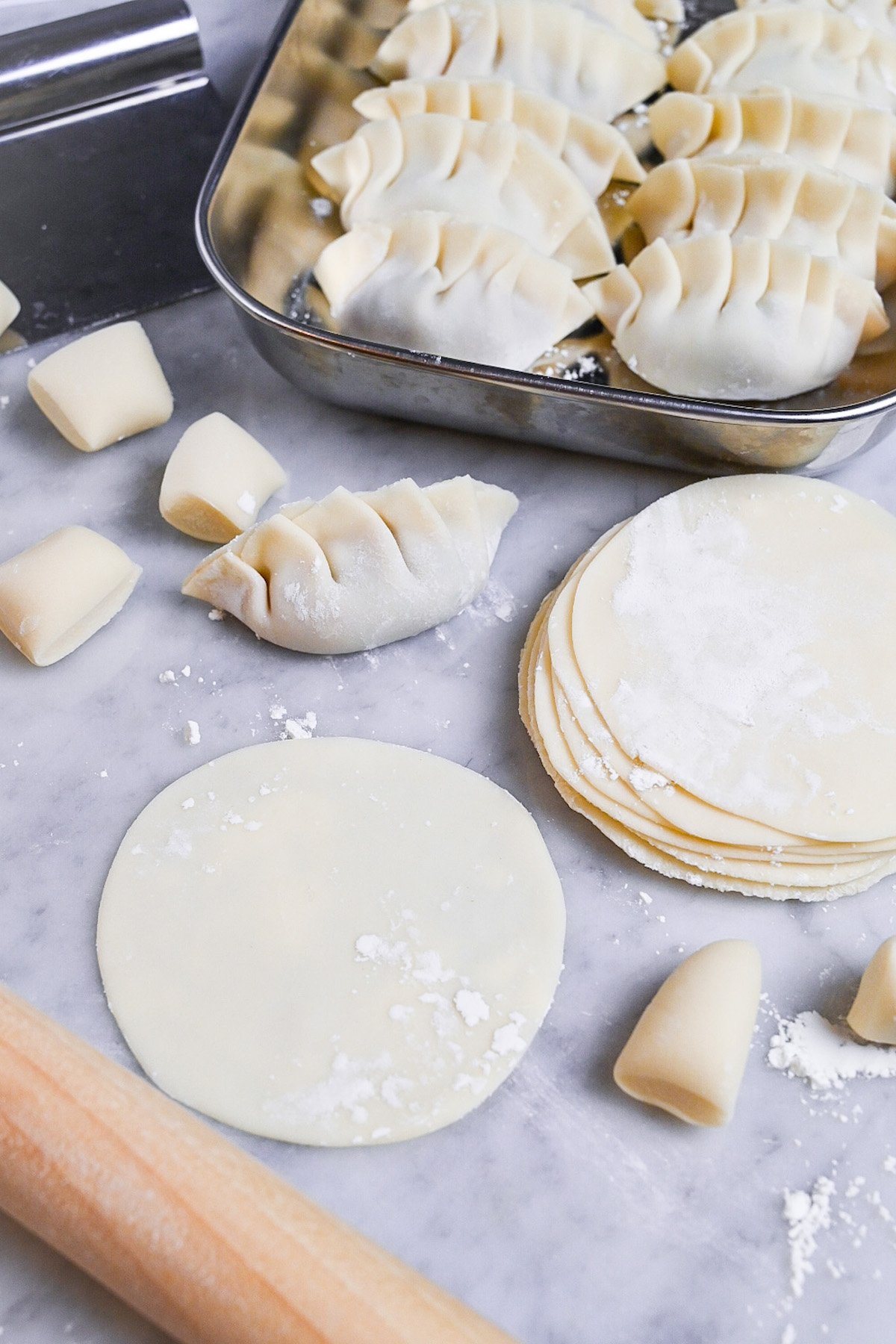
So, with those things in mind, I can truthfully say that if I’m feeling lazy or want to save time, I often buy the wrappers at the store. But if I want the best, restaurant-quality gyoza or there’s someone I want to impress… homemade wins, hands down!
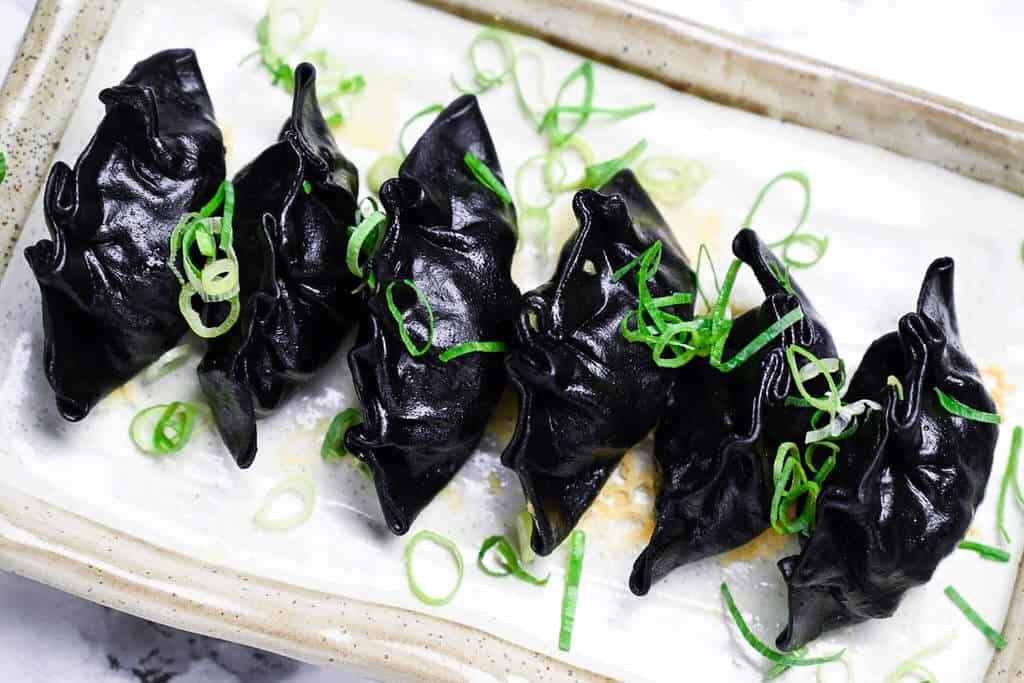
Visual Walkthrough & Tips
Here are my step-by-step instructions for how to make Homemade Gyoza Wrappers. For ingredient quantities and simplified instructions, scroll down for the Printable Recipe Card below.
Start by sifting both types of flour into a bowl. Sifting isn’t vital for this recipe and more of a habit of mine, but it does combine the two flours effortlessly, making it lump-free and easier to mix with the water.
I use the standard 1:1 ratio, but if you want it to be more elastic, you can adjust the ratio to 6:4 (cake:bread), or if you want a firmer one, you can adjust the ratio to 4:6.
I like to mix the two flours for the best of both worlds, but you can use 100% all-purpose flour if you prefer.
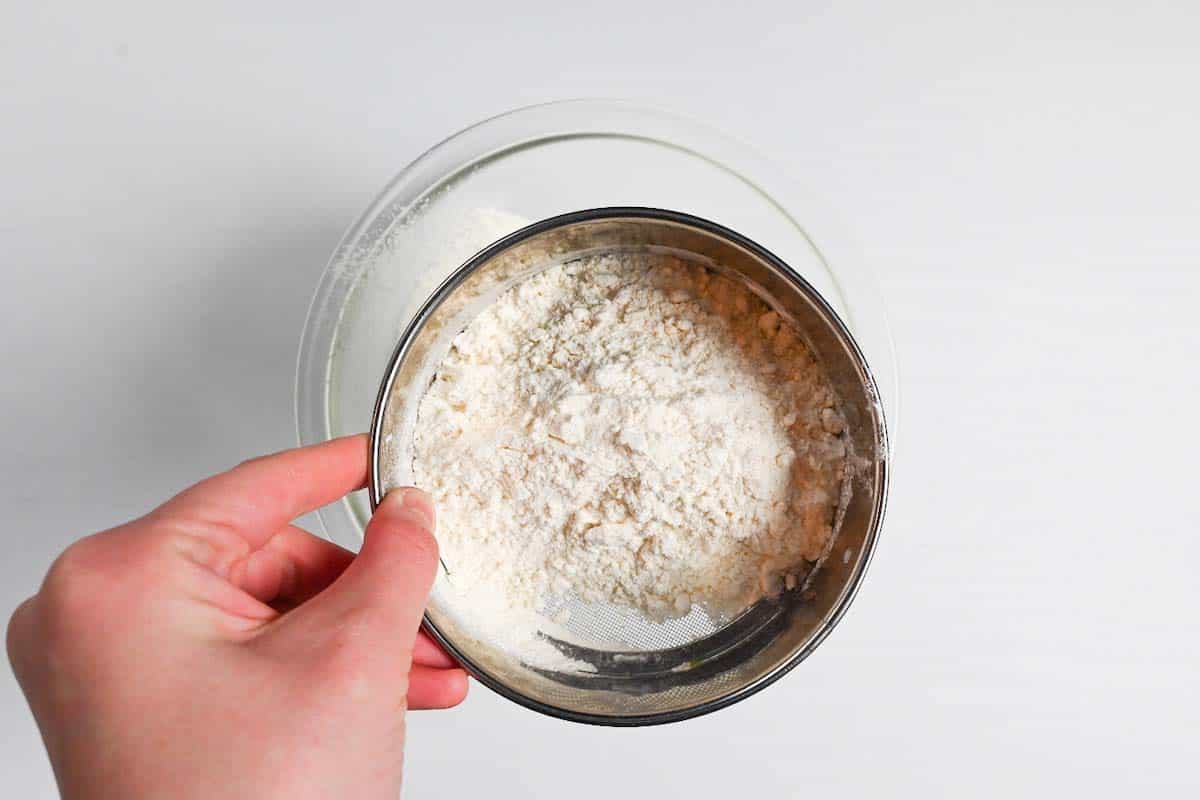
Once sifted, add a generous pinch of salt. I recommend using a fine salt that dissolves easily.
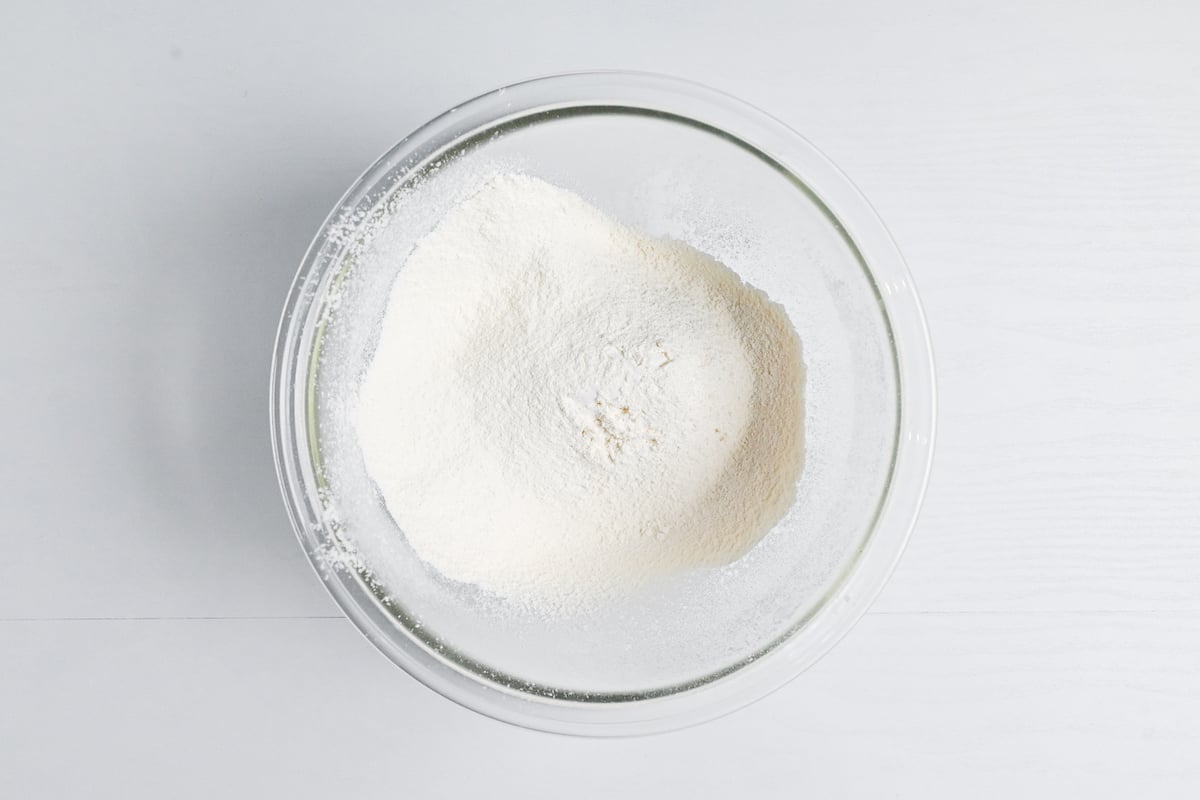
Next, pour the hot water into the flour and mix with a spatula to form a ball.
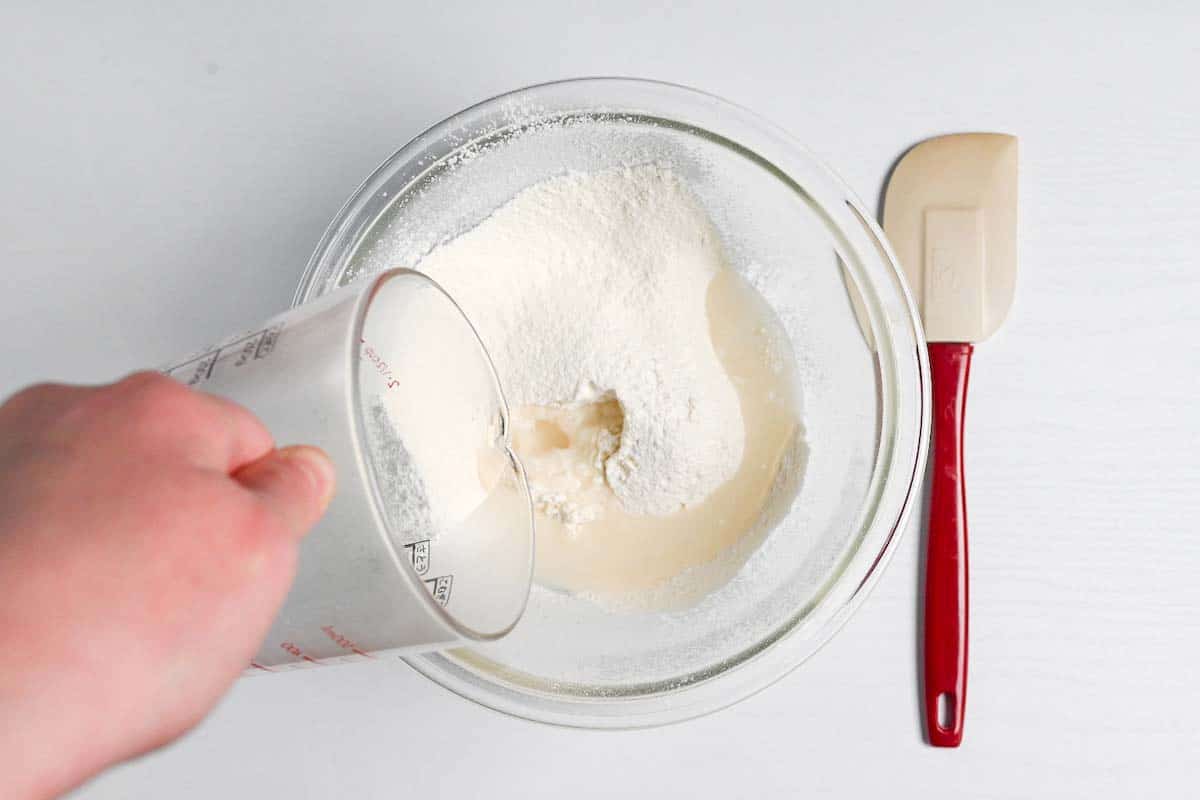
You might be wondering why I use hot water for the dough. Using hot water makes the texture of the dumpling softer, more tender, and easier to roll, and there are a few scientific reasons why.
This is because the gluten has been a little damaged by the heat, so it has slightly less stretch. This will stop it bouncing back when you roll it and make it less chewy when you eat it.
In addition, the heat from the water reacts with the flour and transforms some of the starch into simple sugars, making it a little sweeter. This sweetness creates a nice balance with the savory filling.
Hot water dough is better for making pan-fried or steamed dumplings wrappers. Using cold water will protect the gluten making the dough stronger and more chewy. Cold water dough is better for boiled dumplings or wontons.
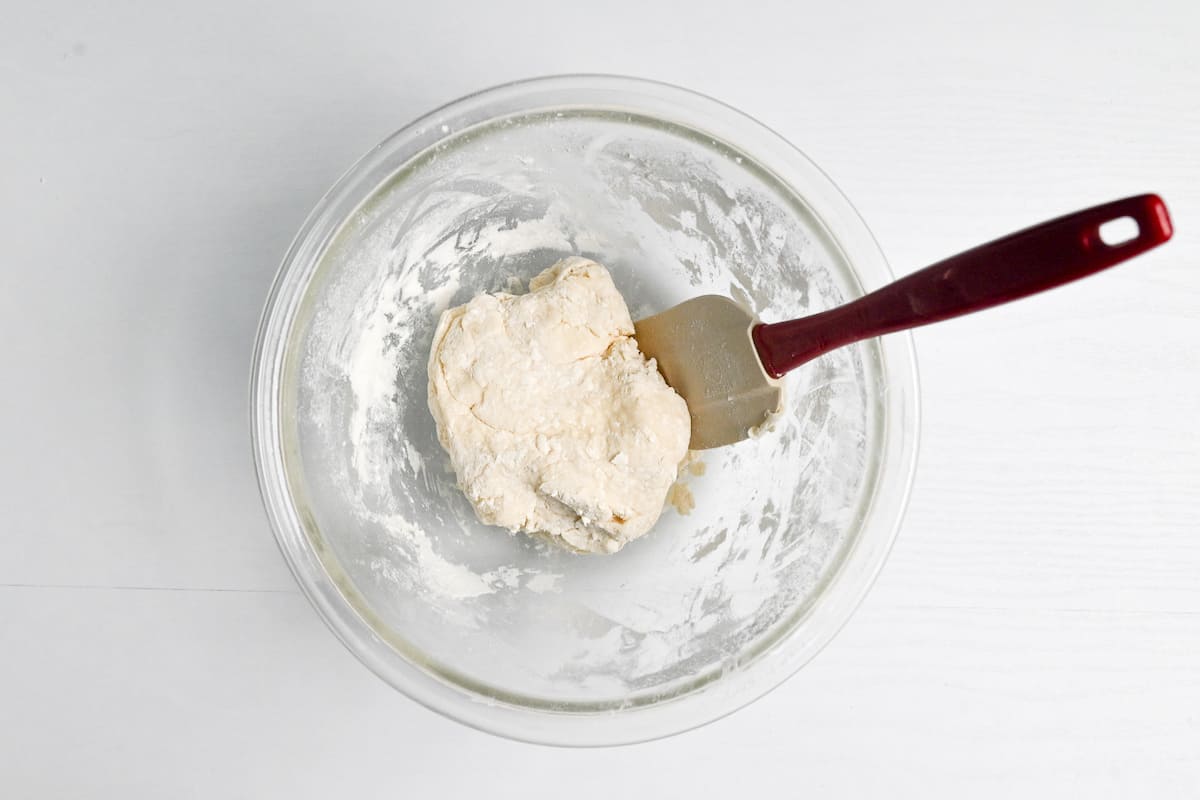
If it seems too dry, add more water but be very sparing. I recommend adding just 1 tsp at a time. You don’t want the dough to be sticky.
It’s time to knead once you’ve combined most of the flour and water!
Take the dough out of the bowl and place it on a clean, dry surface. Knead for about 10-15 minutes by hand.
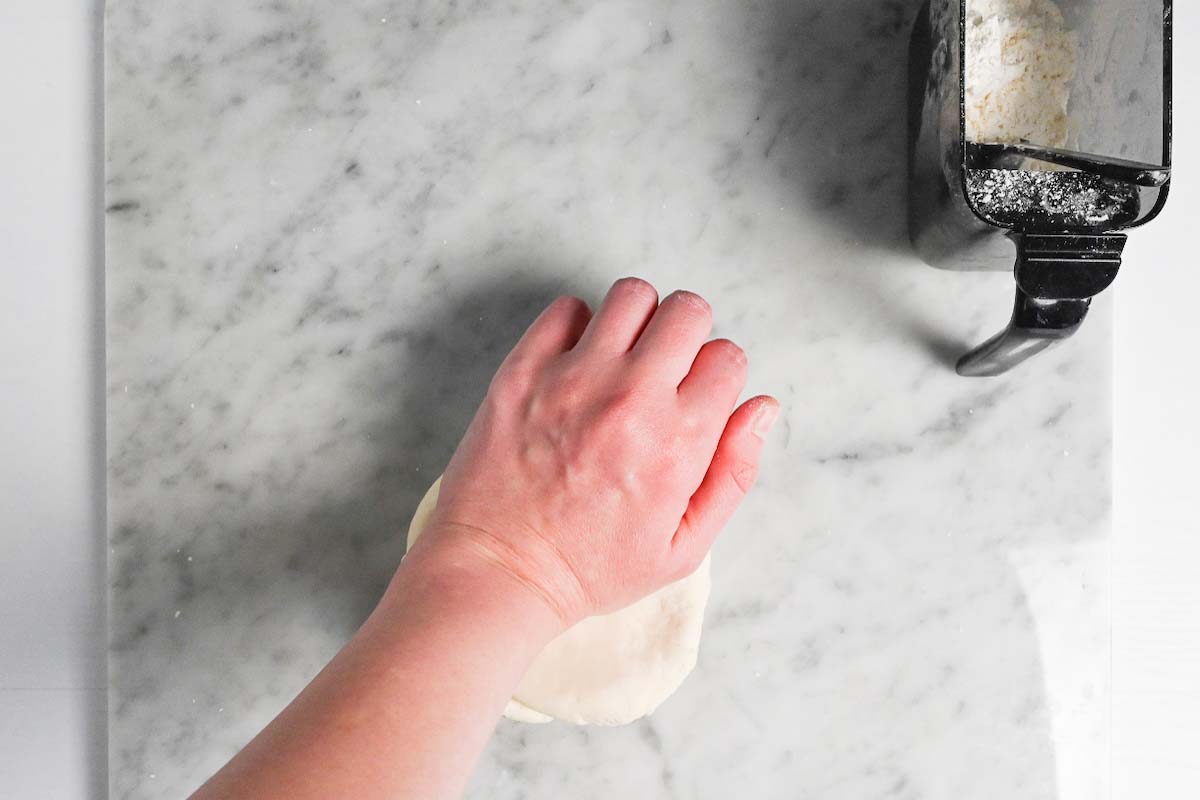
If possible, try to avoid flouring the surface, as this will add extra flour to the dough and make it dry. Dry dough will be difficult to roll out and shape into gyoza later.
This dough is quite dry, and I also took these pictures in winter when the air was particularly dry so I didn’t need to flour my surface. If the weather is humid (like Japanese summer for example!), you might need to flour the surface lightly, but be as sparing as possible and only add it if the dough is too unmanageable.
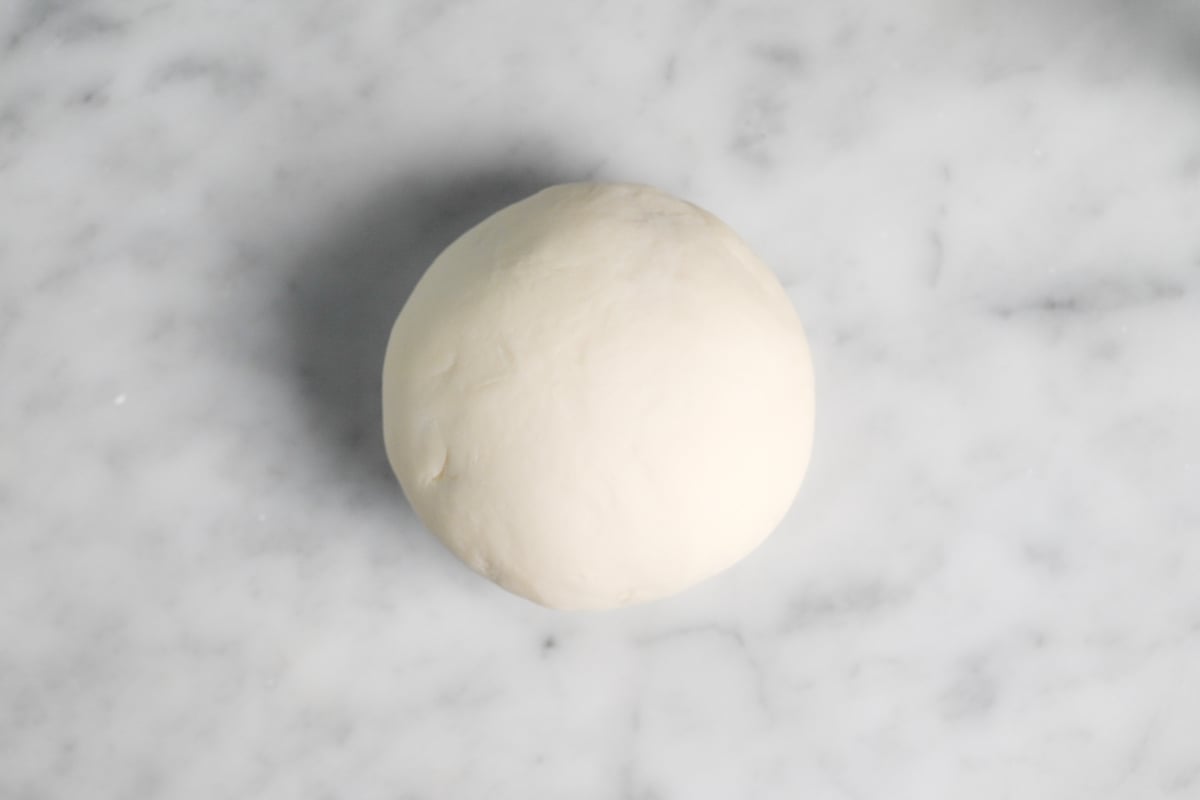
Once you have a smooth ball, wrap it in plastic wrap (or under a damp tea towel) and leave it to rest at room temperature for 30 minutes.
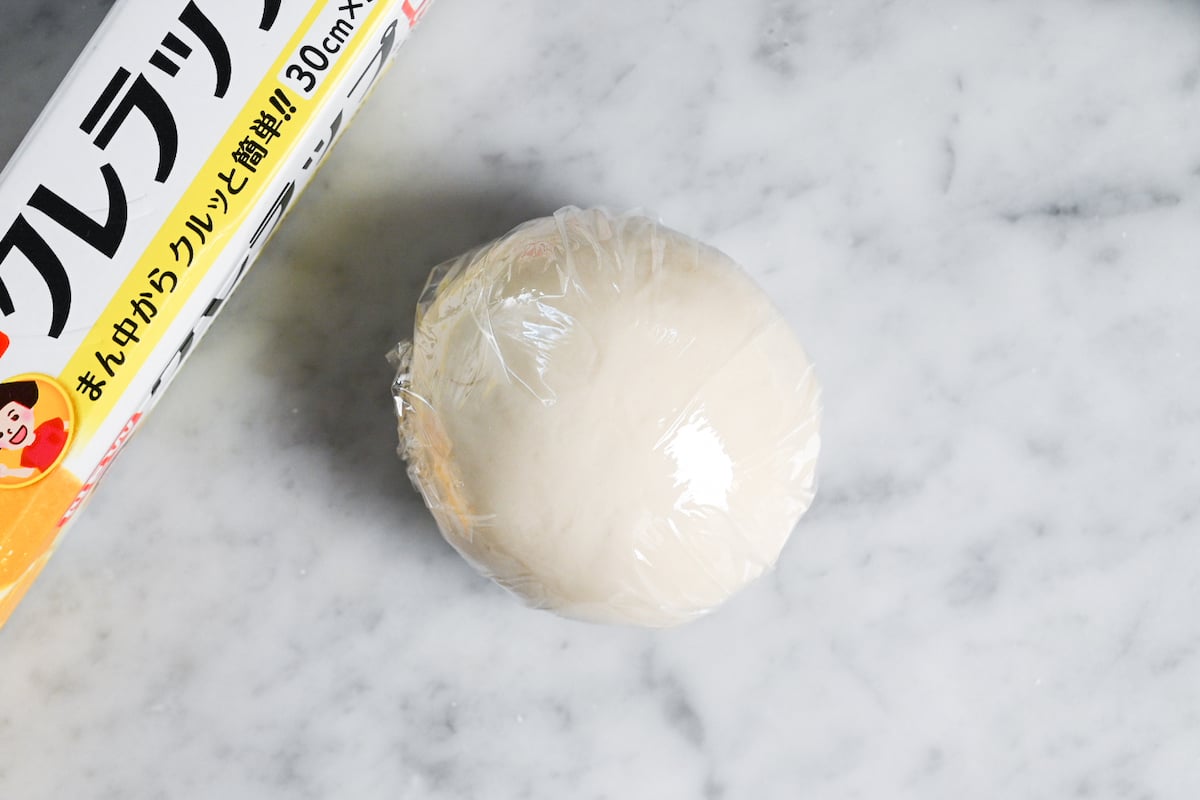
After 30 minutes have passed, divide the dough. In this recipe, I make 32 wrappers, so I divide the dough in two and keep one wrapped. Firstly, this prevents the dough from drying out; secondly, it’s easier to keep count of the wrappers you make with these smaller pieces.
If you’re doubling or tripling the recipe, I recommend dividing it into 4 or 8 pieces and keeping them in a sealed container while you roll the first batch.
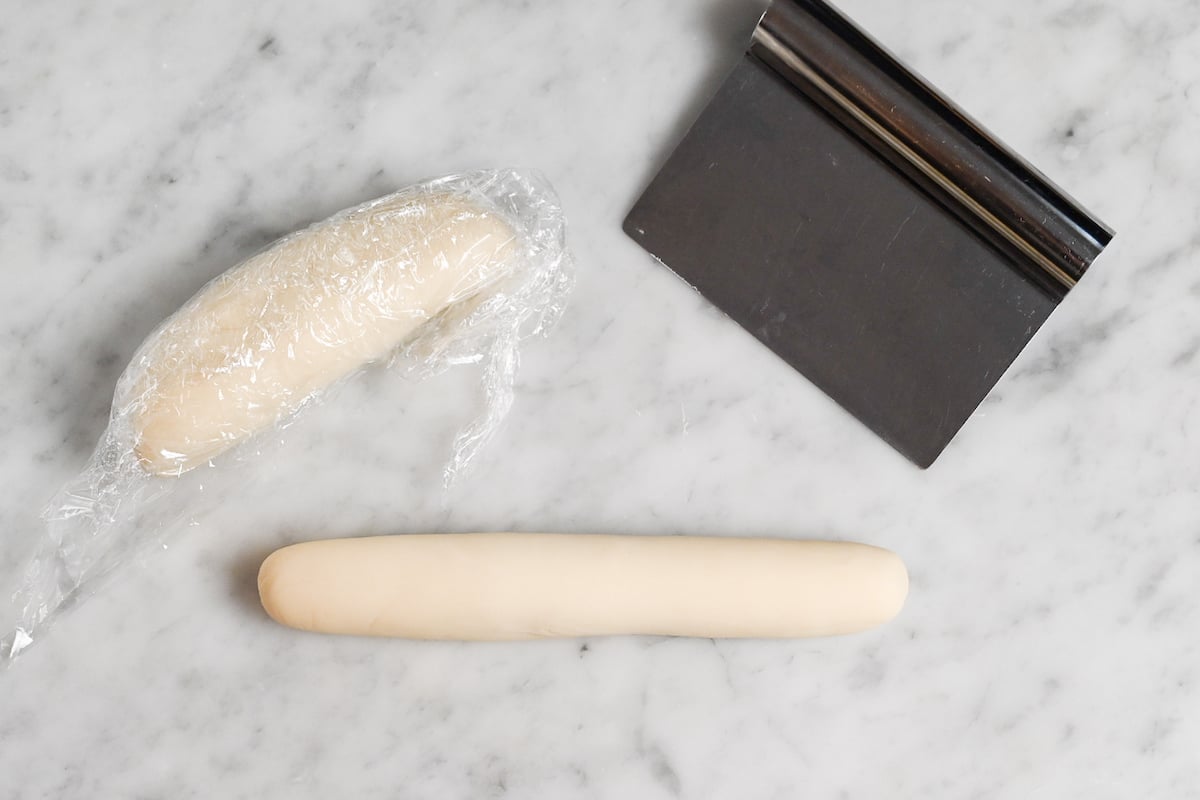
Cut the roll in half, then half each half, then again and again until you have 16 pieces. (This is the easiest way to make them even sizes without weighing them.)
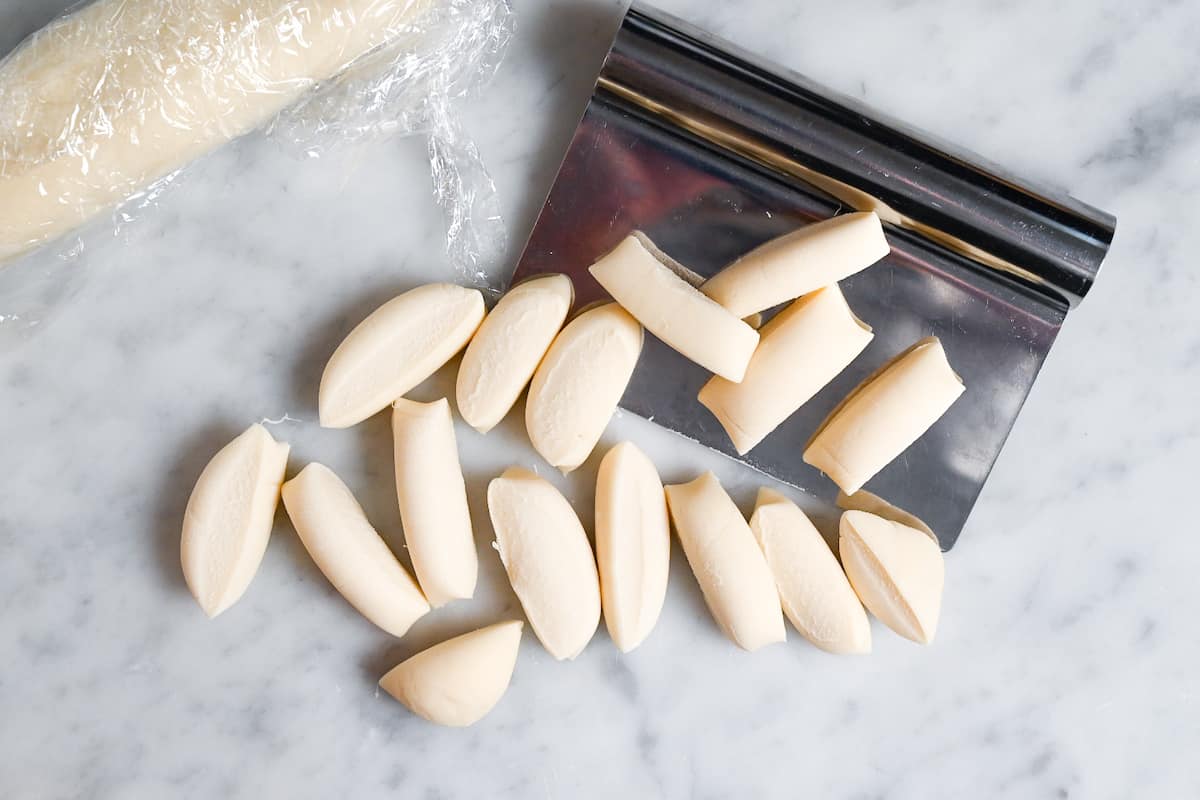
Roll each piece into a small ball.
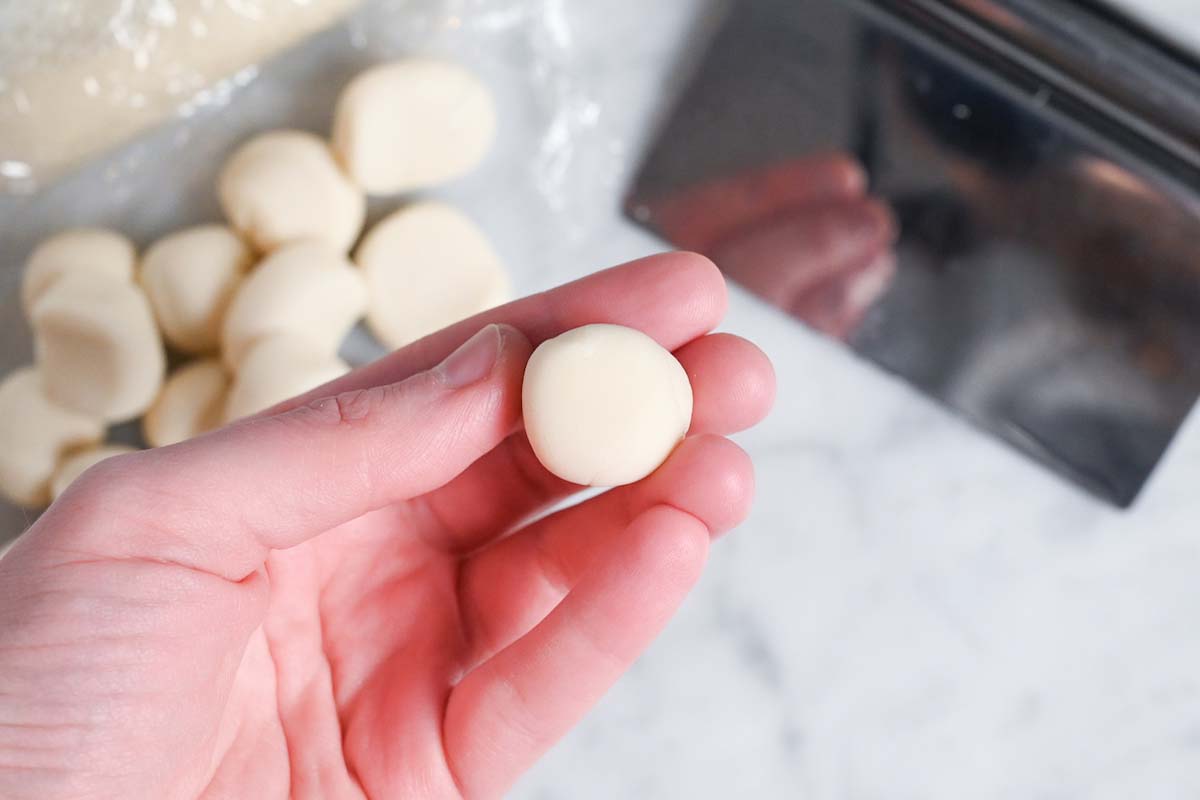
Press it onto a flat surface and roll it out using a rolling pin. Peel the wrapper off the surface and flip or turn it between each roll to stop it from sticking (you can also lightly dust it with flour to prevent sticking).
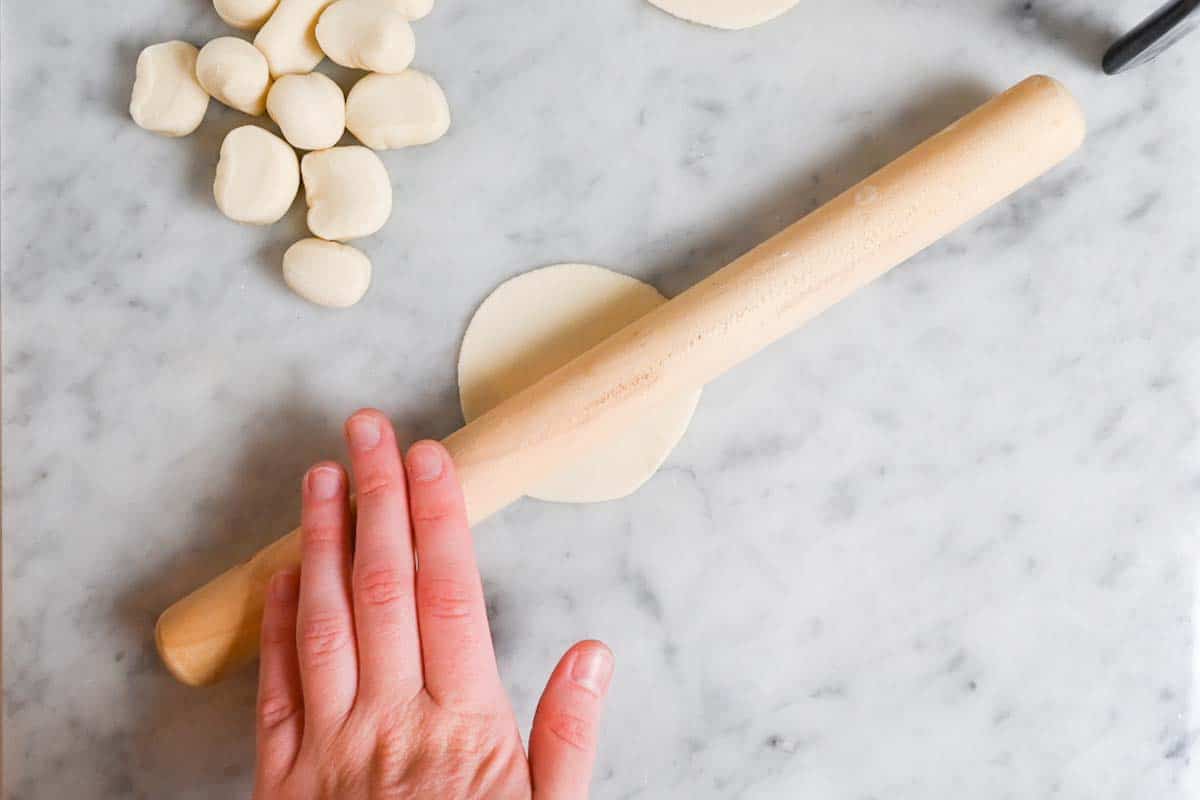
Lift the wrapper and pull the edges all the way around with your thumb and forefinger to help make it a beautiful round shape and thin the edges.
Pinch the edges to make them thinner. I do this so that the top won’t be too thick and doughy when the gyoza is pleated and sealed at the end.
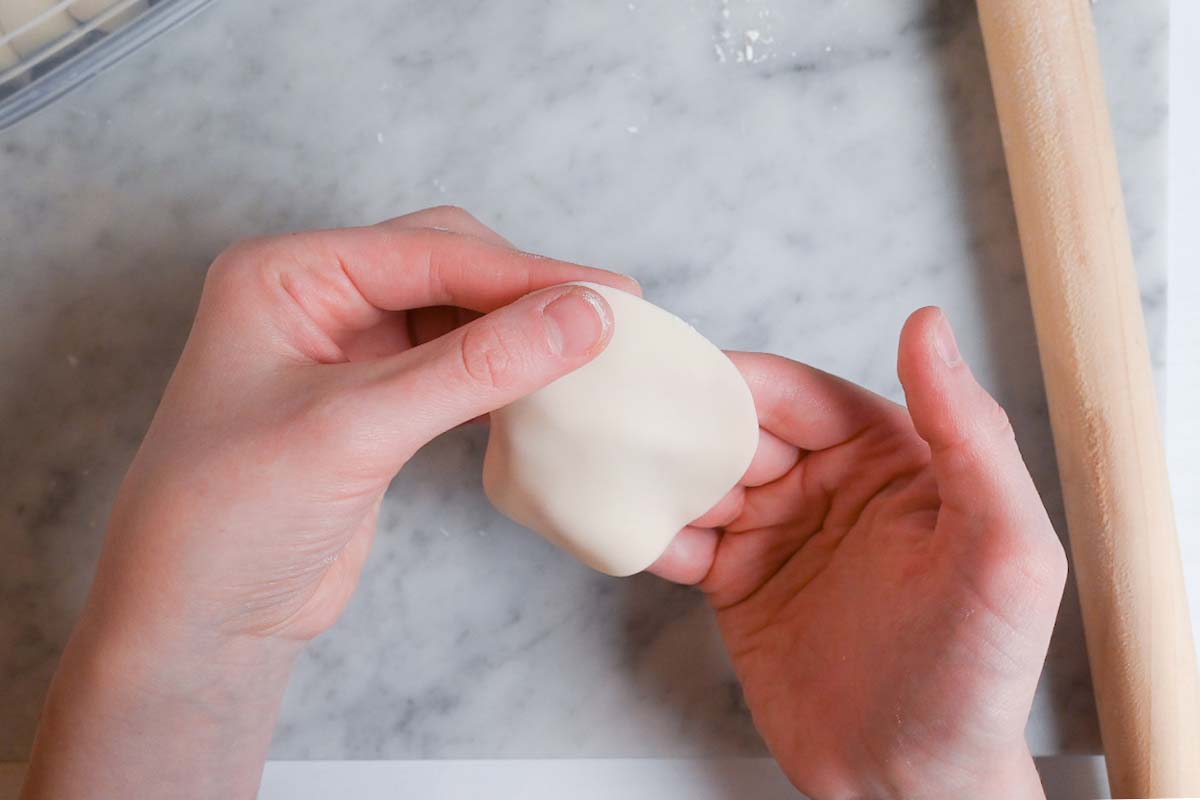
Now is the time to brush both the top and bottom with flour. This will stop them from sticking when you stack them up.
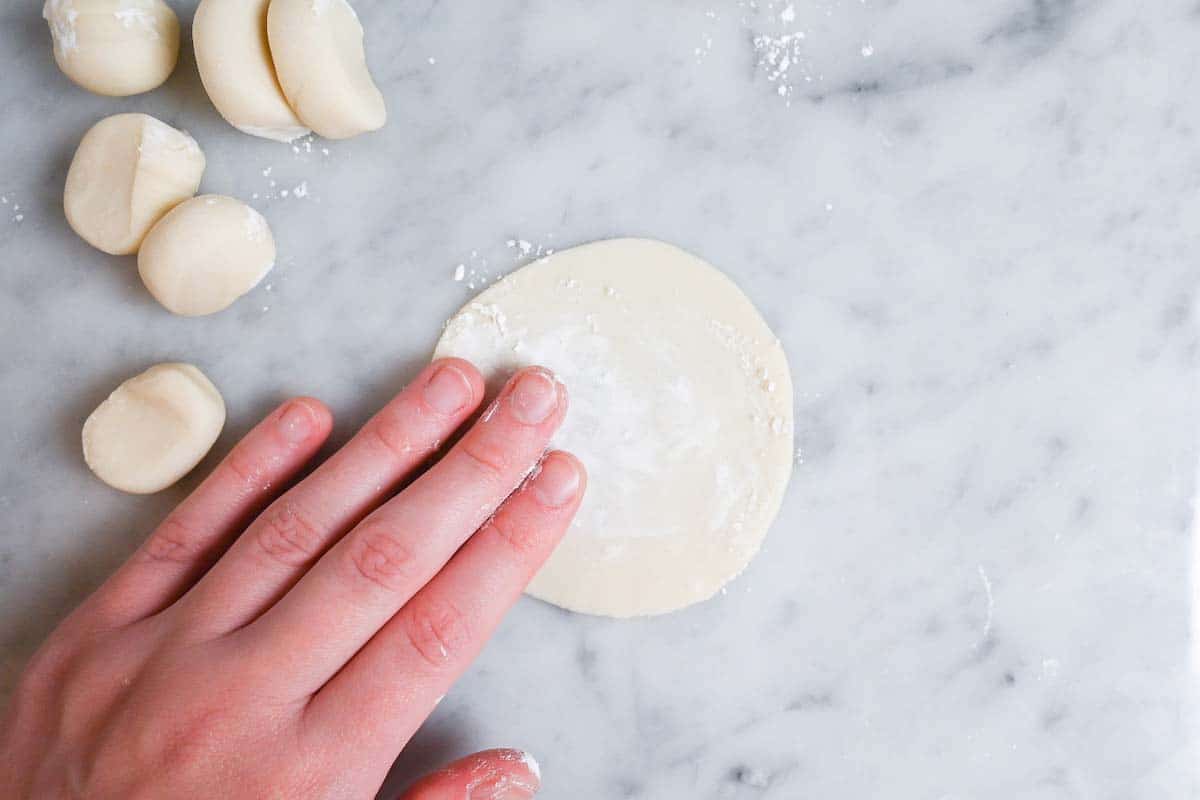
If the air is dry, the wrappers might dry out and break when folded. On the other hand, if the air is too moist, the wrappers might stick together or become too difficult to handle.
The best way to prevent either of these scenarios is to keep your gyoza wrappers in a sealed container while you work.
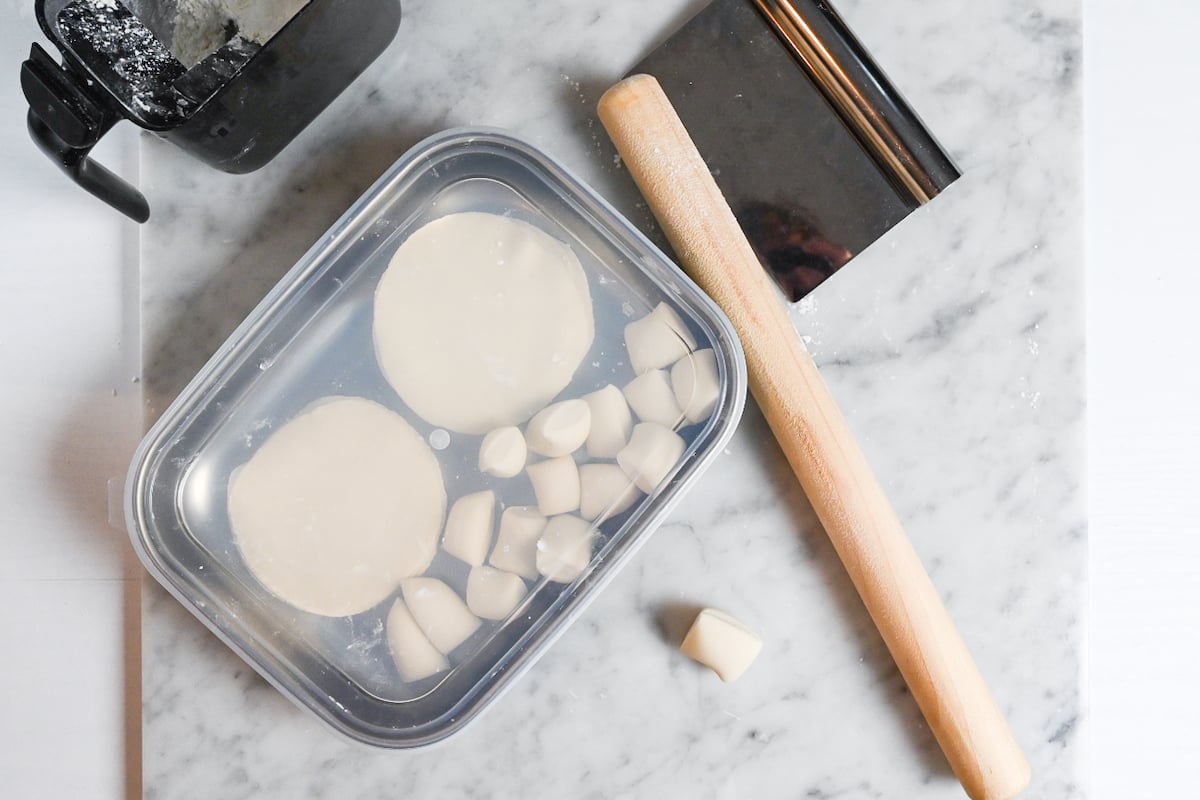
Next let’s move on to shaping!
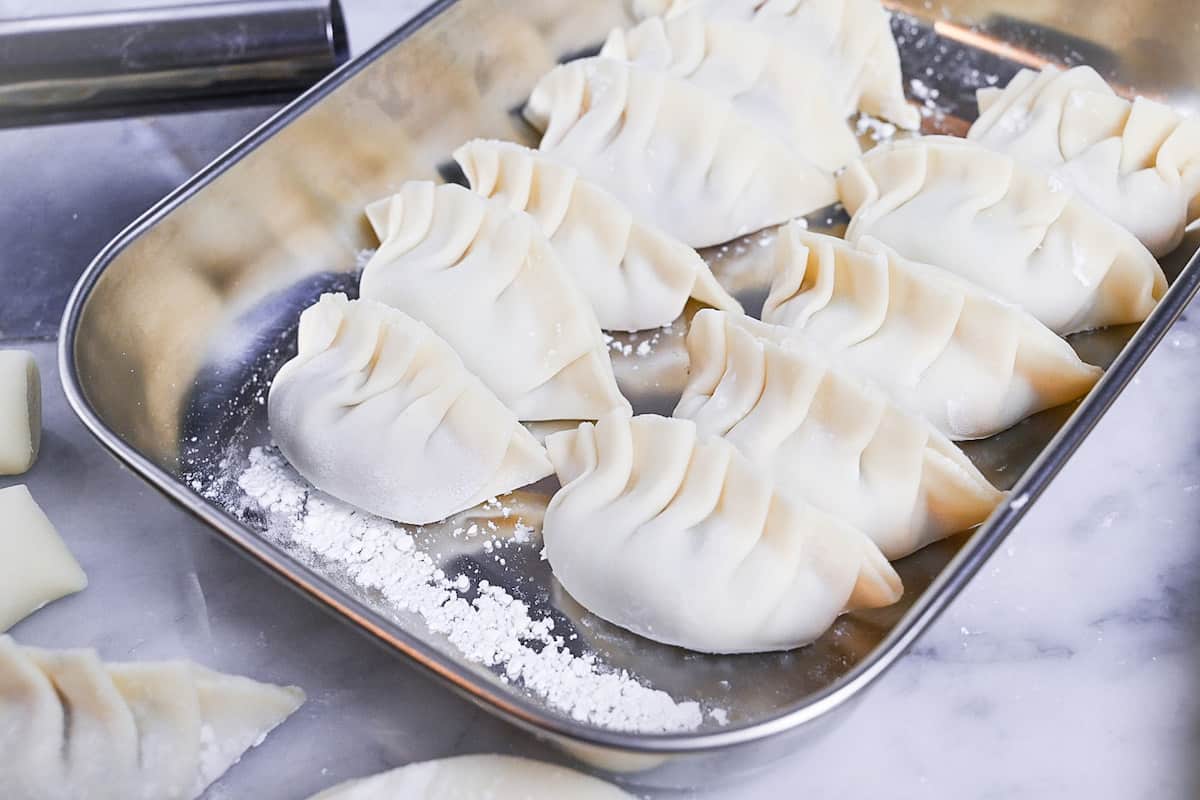
Place about 1 level tablespoon of filling into the center, leaving a wide space around the edge.
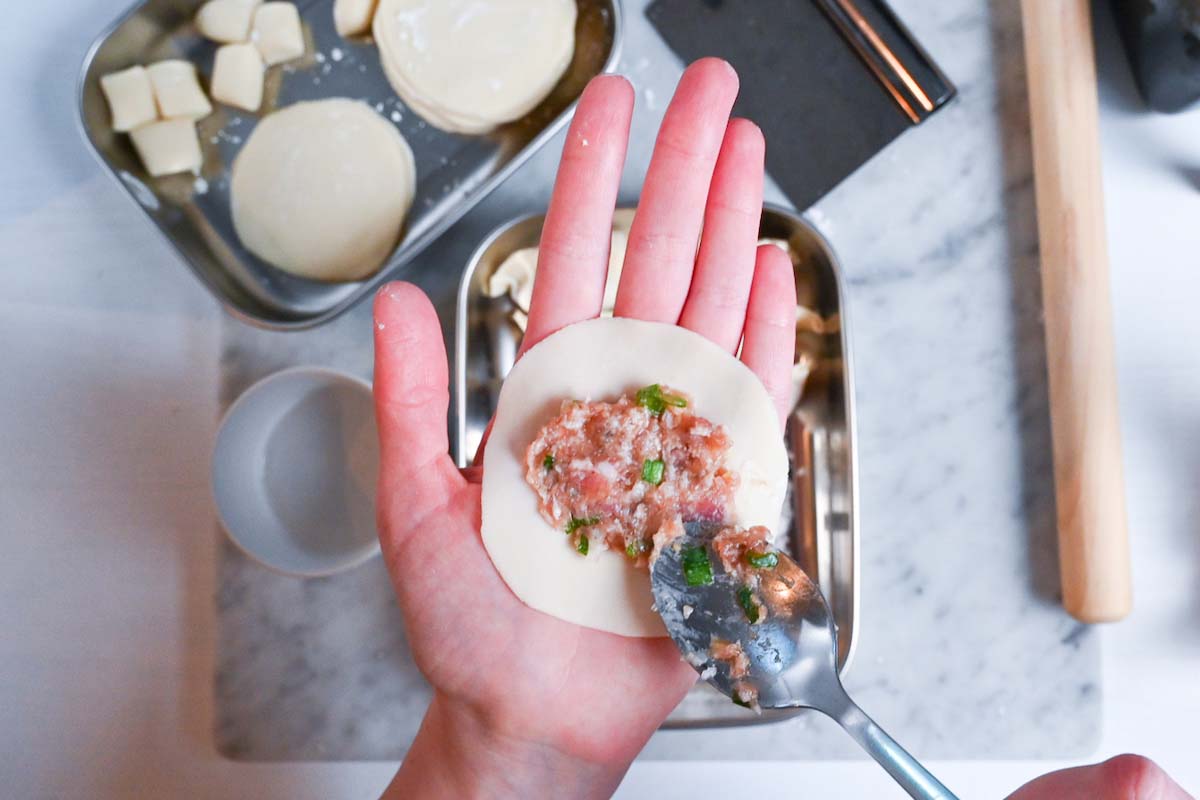
Be careful not to overfill the wrappers, or you won’t be able to fully seal them!
Keep a small bowl of water next to you while you work. Dip your finger in the water and wet the top half edge.
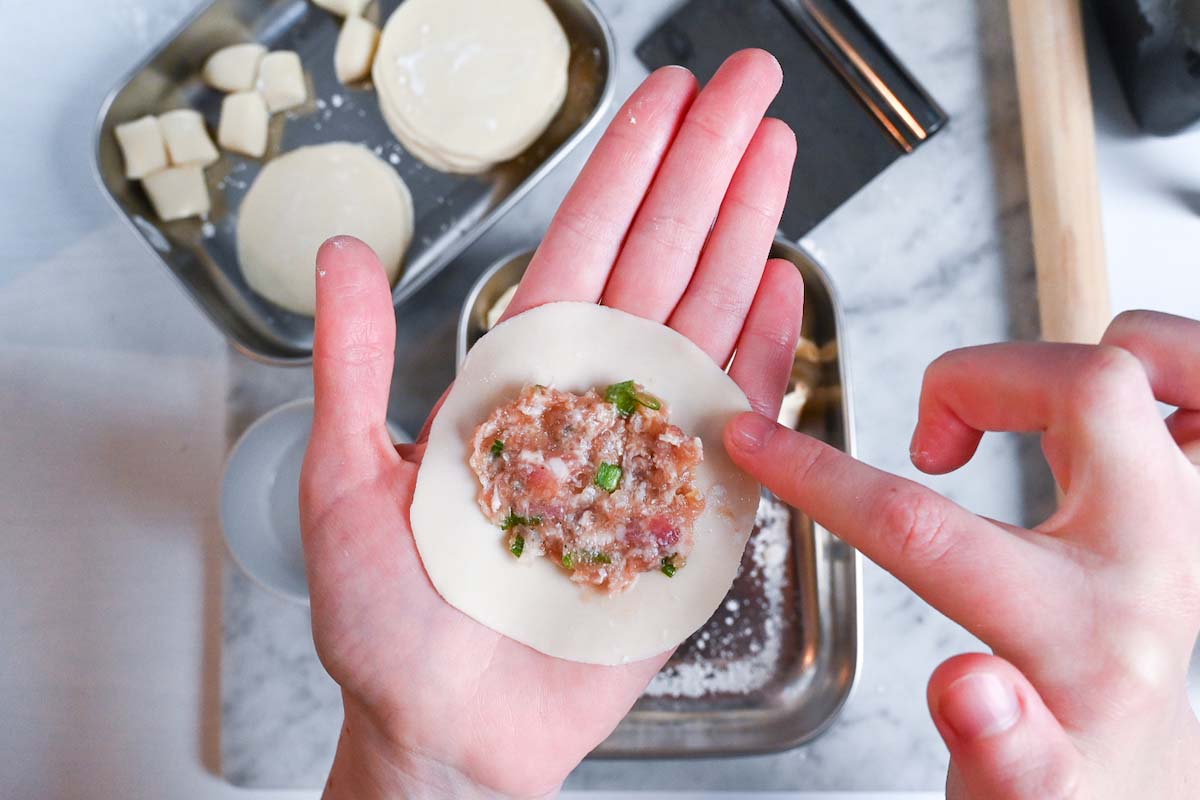
Pinch the starting point to make a sealed corner. If you’re holding the gyoza in your left hand and shaping with your right (like pictured), then you will need to pinch the center of the right side and the reverse if you’re left-handed.
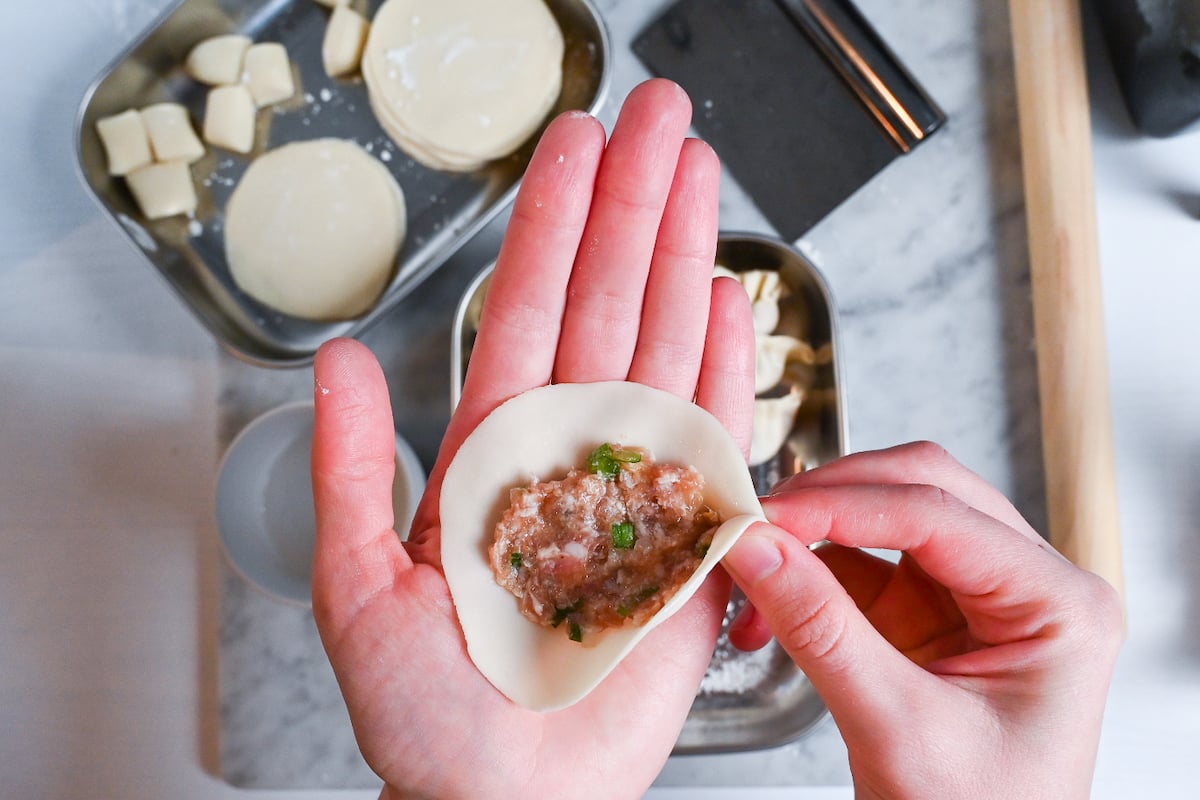
Seal the top by making pleats along the edge with the water. Push a small amount of dough on the top towards the pinched corner and press it down. Continue to pleat all the way to the other side until the gyoza is completely sealed.
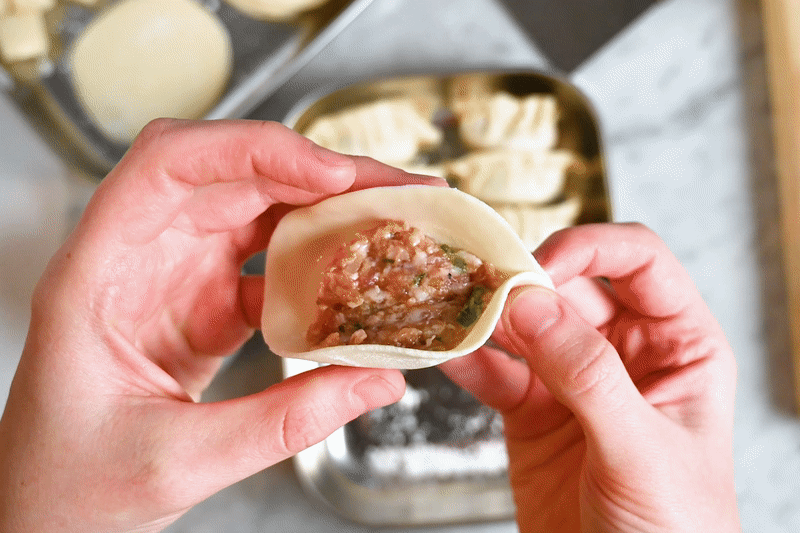
At the end, press all the pleats down to secure it. You can also tap the bottom of the gyoza onto a flat surface to flatten the base. This will make the gyoza stand up, and the base will become crispy when fried.
Jump to Full Recipe MeasurementsHow to Store
I recommend using the wrappers within a few hours of rolling as they tend to stick together the longer they are stored. Also, storing the dough in the fridge for too long will dry it out and make it hard to roll so I don’t recommend that either.
If you want to make them in advance, my best advice is to make the complete gyoza with filling and store those rather than storing the wrappers on their own.
Homemade gyoza can be kept in an airtight container in the fridge for 1-2 days. Alternatively, freeze them in batches and keep them for up to 1 month. Pan fry from frozen and increase the cooking time to ensure they’re thoroughly cooked through.
While you can freeze the completed gyoza, I don’t recommend freezing the wrappers as they tend to stick together once defrosted (this can happen even to store-bought gyoza wrappers too). For best results, use the wrappers the same day and freeze the completed gyoza instead.
FAQ
Since shumai wrappers and gyoza wrappers are almost identical, except for the thickness and shape, it is possible. However, wrappers may stick to the pan if you make gyoza with shumai wrappers. Therefore, we do not recommend substituting if possible.
There are no specific rules, although for store-bought wrappers, the regular size is about 8.5 cm in diameter, and the large size is often 9.5 cm.
About 1.0mm is the norm, but some might be slightly thinner and others thicker than 1.0 mm.
I wouldn’t suggest using spring roll wrappers instead of gyoza, as they’re quite a different style of wrapper with completely different textures.
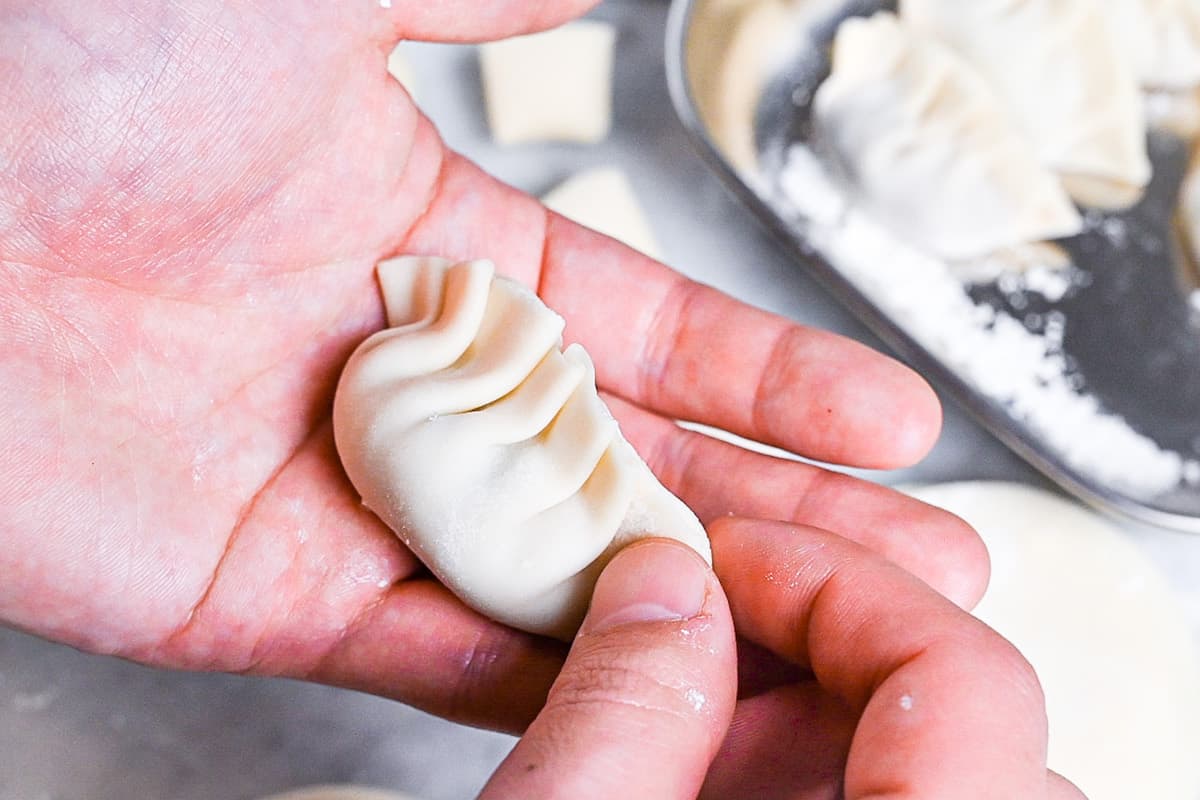
I hope you enjoy this Homemade Gyoza Wrapper recipe! If you try it out, I’d really appreciate it if you could spare a moment to let me know what you thought by giving a review and star rating in the comments below. It’s also helpful to share any adjustments you made to the recipe with our other readers. Thank you!
Make These Gyoza Recipes Using These Wrappers!
Hungry for more? Explore my gyoza recipe collection to find your next favorite dishes!
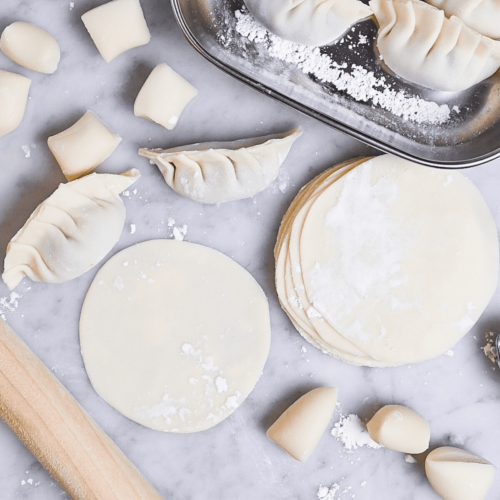
Easy Homemade Gyoza Wrappers
Ingredients
- 100 g cake flour plus extra for sprinkling
- 100 g bread flour
- 100 ml freshly boiled water
- ½ tsp salt fine sea salt is recommended
My recommended brands of ingredients and seasonings can be found in my Japanese pantry guide.
Can’t find certain Japanese ingredients? See my substitution guide here.
Instructions
- Sift the 100 g cake flour and 100 g bread flour into a large mixing bowl and add ½ tsp salt.

- Pour 100 ml freshly boiled water into the mixing bowl and mix with the flour until a dough forms.

- Transfer the dough to a clean dry surface. Add a little flour to the surface if your dough is too sticky, but be sparing. Adding too much flour can make the dough too dry.

- Knead for 10 minutes until smooth.

- Wrap it with plastic kitchen wrap and leave to rest for 30 minutes at room temperature.

- Once rested, cut the dough in half and roll each piece into even cylinders. (If doubling the recipe, cut into 4. If tripling the recipe, cut into 8.) Wrap any that aren't being used straight away to stop them from drying out.

- Cut cylinder of dough in half, then half again and continue to half until you have 16 pieces.

- Roll each piece into a ball.

- Now dust your surface with flour and push one ball of dough flat down using the palm of your hand.Roll it flat using a rolling pin, turn and flip from time to time to keep it at an even thickness and prevent it from sticking to the surface. Roll it as thin as you can without breaking it.

- Pick up the wrapper and use your fingers to pinch around the edges, making the edges even thinner and neatening the circle shape.

- Generously rub flour on the top and bottom of the wrapper ready for stacking.

- Repeat with the rest of the dough and store the completed wrappers in an airtight container to stop them from drying out.

- Use the wrappers with your favorite gyoza fillings. (See in the post for how to shape with filling and check out my pork gyoza recipe for how cook the perfect gyoza with a crispy base.)

- Enjoy!
Video
Notes
- Use fine salt for better dissolution.
- For stretchy dough, use a 6:4 ratio of cake flour to bread flour; for firmer dough, use a 4:6 ratio.
- Use wrappers within a few hours of rolling to prevent sticking; avoid refrigerating dough as it will dry out.
- Make complete filled gyoza in advance rather than storing wrappers alone.
- Never freeze gyoza wrappers as they stick together when defrosted.
- Use all-purpose flour as a substitute for cake flour and bread flour.
- Prepare approximately 450g of filling for 32 wrappers.




One of the cons printed is that of making them all uniform. I use my pasta machine to roll out the dough. Same thickness every time. cut the sheet of dough with whatever to your desired size. ( a glass, cooky cutter). Knead leftover pieces roughly then put back through the machine. Continue till all dough is used. Cut baking paper into small pieces that would cover a wrap. Separate each unused wrap with a piece of baking paper. Cover the pile with freezer prove wrap and freeze. Easy to separate wraps.
Don’t have cake flour. Have lots of all purpose and strong flour. Will try with all purpose. We are trying the Gyoza tomorrow night. Looking forward to more of your recipes.
Hi Vic,
Thank you so much for sharing your detailed tips!
Using a pasta machine is definitely a great solution – I really need to update this post to include this method. When I originally developed this recipe back in 2020, I didn’t have a pasta machine, but I recently got one for making noodles. Your suggestion is a perfect reminder to revisit this recipe with the pasta machine technique.
I hope you enjoy making your gyoza! 🙂
Yuto
East to follow recipes with detailed photos. thank you.
Thank you so much, Lyn! 🙂